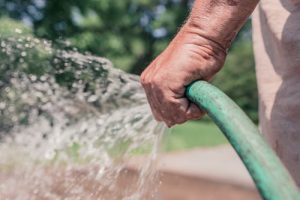 How much water do plants need? How frustrating is it when the vegetable you’ve put so much work into just withers away while a dandelion is like “is that a dry sidewalk crack where I can be stepped on every day? Yes please!”
How much water do plants need? How frustrating is it when the vegetable you’ve put so much work into just withers away while a dandelion is like “is that a dry sidewalk crack where I can be stepped on every day? Yes please!”
One of the reasons this happens is that dandelions grow where they want and where they’re adapted to, while your flowers that you lovingly chose at the nursery had no way to tell you where they want to live.
The amount of watering a plant needs depends on three things
- What its usual habitat is.
- How it obtains and stores water.
- What the soil type in your area is.
The main way to figure out how to keep your flora happy is to figure out where and how it would be happy in nature.
To keep your flowers as happy as weeds, you should get to know what type of environment they like. But you can’t just take your sprout out to dinner and make small talk about its preferences. How much water do your plants need? You will have to ask:
- The internet
- Agardening manual
- Your local garden center
where they usually grow.
The habitat can be broken down into two features.
- How much rain does the area usually get.
- When does it rain.
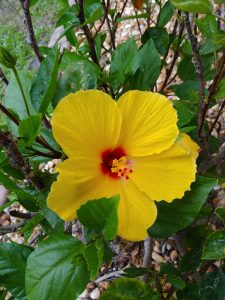
I’ve broken this down into four main types, with some examples of the “usual crowd” who grows there.
1) Slow steady rain all year round
These are mostly tropical, rain forest, swamp or marsh type vegetation. Plants native to these areas will usually want to have damp soil all year long, with frequent deep soaking each time the soil gets about as dry as a damp sponge. Some of these will even grow in standing water.
Here is a list from gardeningknowhow.com with a few examples. Notice how often the words “swamp” and “marsh” appear in these names. Some are named nice enough to tell you exactly what they want from the beginning.
2) Dry spells with huge deep rains
These are your desert types, they are used to having very little water for a long time and then absorbing as much as possible all at once to store until the next rain. In this habitat you will find cacti, succulents, and other flora with deep roots that are designed like water tanks.
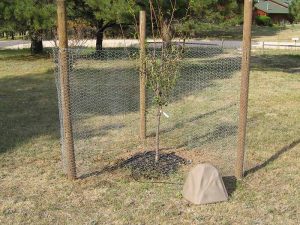 Areas with mist or fog as the major water source
Areas with mist or fog as the major water source
This category is trickier, many of the specimens in it are contained in micro-climates within broader areas. Some of these are mosses or vines that grow hanging from other plants in very humid areas. Others are coastal greenery that survive on a cliff’s edge gathering moisture from the ocean spray.4)Occasional, medium rains
This is your temperate forest type of area suited for the more standard garden flowers, fruits and vegetables. These like for the soil to dry out a bit more between watering and are subject to rot if they’re frequently drenched. They don’t have the desert type adaptations to store tons of moisture, so they do still need to be dampened regularly. Most vegetables are in this group, with some preferring slightly wetter conditions than others.From Root to Leaf, Absorption and Evaporation
Most greenery absorbs water from their root Where their roots want to grow are the conditions they prefer. They do not absorb moisture from their leaves. When the rain comes down straight on top of them it doesn’t always get where it needs to be. In some more delicate types, this can cause disease and fungus to infect the leaves if they’re wet at the wrong times.
This is where ground irrigation systems can be super useful, like these cute watering rocks. There are many blogs available on the benefits of drip irrigation for plants.
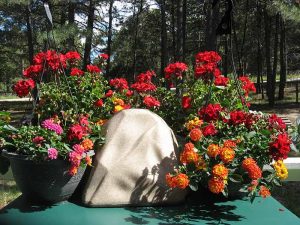
Plants lose water from their leaves so a useful way to tell how fast your precious plants will dry out is to see how much surface area its leaves have. This will help you determine how much and often your plants will need water.The more and broader the leaf, the more you may need to water.
Types of soil
How much water do your plants need? It depends on what kind of soil; you have. The type of soil your area has is a big determinant.
Most soil is a mix of all three types, but what matters is how much of each type your soil has. An ideal mix for most flora is 40% sand, 40% silt, and 20% clay. This is known as loam. Of course, as we’ve seen, different herbage is adapted to different conditions so it depends on what you’re growing. Your best bet again is to get to know your specific shrub’s culture and find out what it likes.
Sand
In the words of Anakin, “It’s coarse, rough, and irritating and it gets everywhere.” Because it is coarse and rough, it dries out really easily. If your soil is sandy, add that to your list of grievances. Sandy soil will require soaking much more frequently than other types if you want to grow vegetation that isn’t used to that much drainage. There are plants that do like sandy soil.
Silt
This is the good stuff that most gardeners are hoping to find. It’s finer than sand but coarser than clay. Silt drains well while holding on to nutrients in the soil. If your soil is mostly silt, it will probably drain at a good pace that most plants will like.
Clay
This is the most dense soil type, with tiny particles that stick together and hold in moisture. If you get long standing puddles in your yard, you probably have a lot of clay in your soil. This soil needs to be amended to grow plants.Even though some vegetation like to stay wet, it can betoo dense for them to push their roots through. Here is a link to some plants that like clay soil.
To figure out what your soil is composed of there’s a simple experiment you can do at home. This video shows the steps nicely. Basically you put a sample of your soil in a jar with some H2O, and shake it up, then when it settles the sand is on the bottom, then the silt, then the clay.
Other Factors Affecting Moisture Needs
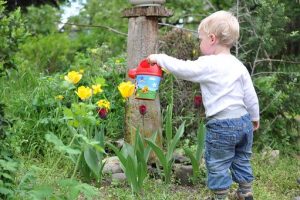 Container Size
Container Size
Container size is also a big factor in determining how much water plants need. If you’re baking a cake, the center is the last part to cook and dry out. The bigger the cake the longer this takes. However, the shape of the cake also makes a difference. If the cake is thin it will cook and dry much faster than the same amount of batter in a taller narrower pan. Garden containers are the same. How fast a pot will dry out depends on how big it is, but also how much surface area it has. A very shallow pot will need much more frequent watering.
Mulch and Sun
Mulch and sun go together because they work opposite of each other. Sun exposure will obviously cause soil to dry faster than it would in the shade. Mulch is like sunblock for the dirt. An area with all day sun and mulch will still dry faster than a really shaded area. The mulch will slow it down significantly. Ground cover can also act as a mulch. It provides a shaded layer that keeps sun off the dirt like an umbrella.
So What Does This Mean for You?
Now it is your job to be a detective and put together all the clues of your own plants situation. Using this information and hyperlinks to other informative articles you will be able to figure out how much water your plants need. Here are some example situations.
If you have
- a tiny pot
- full of mostly sand
- with a specimen that needs tons of water
Then you are going to need to run a hose over it 24 hours a day.
If you planted
- a wetland flower
- in clay loam soil
- in the ground
Then you won’t have to do much at all except water occasionally if it doesn’t rain for a while.
Once you figure out how often you need to water your garden, the only thing you need to worry about is actually doing it.
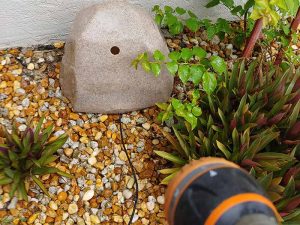
Sounds simple enough. Unfortunately flora are happiest in more natural situations and being quickly flooded with a hose is not very natural. This is where drip irrigation systems can be really useful. They can imitate the slow drip of rainfall to make most flora feel right at home. Additionally, many irrigation systems have timers to measure how long and how much water you want for your garden. This can help a lot with both over- and under-watering problems.
To Review:
- Get to know your flower, where are they from, what do they like?
- Get in your dirt, how clingy is it?
- Think of your containers like cake pans when you wonder how fast they will dry
- Don’t be afraid to let technology do the work for you
See our other blogs on gardening and unique products at www.watering-rocks.com
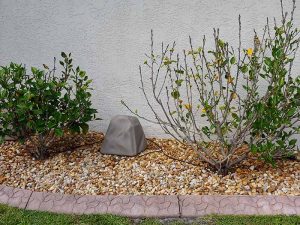
Before
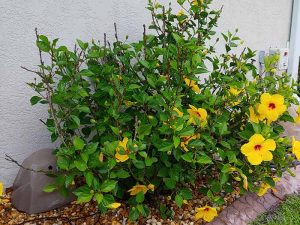
After
